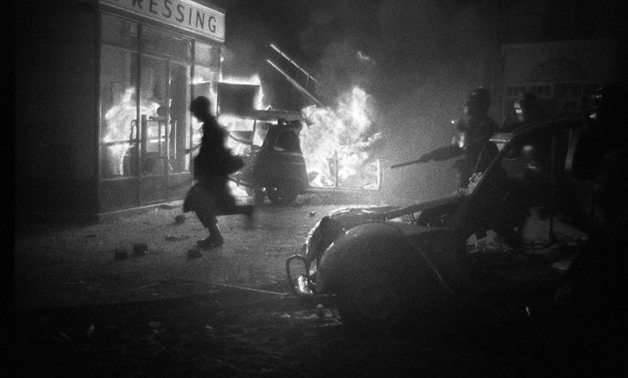
Students and security forces clash in Paris's Latin Quarter during the night of 10-11 May, 1968 - AFP
FRANCE - 20 March 2018: Fifty years ago France was rocked by a violent student revolt that drew in factory workers in an outpouring of emotion that still marks the country.
Students demanding more liberties in the conservative and authoritarian mood of the time found a voice in the global outcry against the Vietnam War.
Their protests snowballed as students and workers joined together for weeks of tumult that saw street battles, France's biggest ever strike and even some celebrations, remembered today as just "May 68".
Here is how it unfolded.
- Anti-war -
In March, German sociology undergraduate Daniel Cohn-Bendit and 100 other students occupy administrative offices at Nanterre University, west of Paris, to protest the arrests of others in an anti-war group.
Danny the Red, so known because of his hair colour and politics, is a popular and inspiring leader "even among those who do not share his ideas," AFP writes.
Other campuses join the protest as it expands to include long-held demands for an end to rules barring men and women from each others' residences and to contest a reform on university selection.
AFP on March 31 recounts a small victory for a group of determined male students at one campus when they are able to force open a locked door between residences "which allowed them to access the section reserved for young women".
The protests force universities to shut and students from various areas move their action to the heart of the capital, occupying the prestigious Sorbonne University.
- 'Uncontrollable' -
At 4:45 pm on May 3 police in helmets and armed with shields enter the Sorbonne and round up 600 protesters.
The student anger is ignited. Protestors become "uncontrollable," a police chief says.
Days of clashes break out near the Sorbonne. Hundreds are wounded and arrested. Protests spread to other cities.
Lecture halls, classrooms and theatres around the capital are occupied, becoming forums for round-the-clock debate.
"Imagination in the leadership" demands a slogan scrawled on walls.
Overnight May 10, students erect dozens of barricades around the Sorbonne's Latin Quarter. Riot police fire tear gas; protestors hurl back paving stones, ripping up roads, torching vehicles.
Hundreds more are hurt and detained.
- Students, workers unite -
A massive demonstration on May 13 marks the merger of the campus-based movement and parallel protest action by factory and farm workers, who have for months been demanding labour reforms.
A 24-hour strike is called and students and workers march together in their thousands across the country.
It is the students who made the first move, with some trade unions initially suspicious of, and hostile to, the young "leftists" who had come to "teach them a lesson".
But dialogue leads to unity.
"It is more fun at the Sorbonne than at the factory," a young man from a worker-occupied Renault plant tells AFP.
The strike is extended on May 14, the country coming to a standstill. Public transport halts; petrol pumps run dry.
Over the next weeks, seven to 10 million workers down tools, in the biggest general strike that France has ever known.
- Deadly turning point -
The "night at the barricades" of May 24 is particularly violent with a young man killed in rioting in Paris, where buildings are sacked and set alight.
A police commissioner dies in protests in the central city of Lyon.
The barrelling movement abruptly reaches a turning point.
The government and unions agree to a 35-percent hike in the minimum wage.
But workers maintain their strike and the last occupied factories are only cleared by June, sometimes after brute police force, with two men killed at a Peugeot plant in the east.
President Charles de Gaulle is slow to grasp the scale of the uprising. After demands that he resign, he announces a referendum, including on his continued role, but it meets with little reaction.
- Back in charge -
Then the president "disappears" on May 29. There are questions, confusion, some alarm.
He resurfaces the following day with, it emerges later, reassurances of backing from a key French military command in Germany.
Boosted, De Gaulle announces he will not resign and instead dissolves the National Assembly.
Hundreds of thousands of people descend onto the streets in relief, a vast show of support after the weeks of uncertainty.
A "massive crowd brandishing the French flag and banners" took over the Champs-Elysees avenue, chanting "Down with anarchy" and "France back to work", AFP reports.
Elections for a new National Assembly on June 30 overwhelmingly vote back De Gaulle's party and its allies.
Over the next weeks, France slowly returns to normal as work and transport resume and street demonstrations are called off.
By mid-June the last protestors are evicted from the Sorbonne.
There is eventually a referendum on De Gaulle's position, 10 months later. It decides 'no' and he steps down.


Comments
Leave a Comment